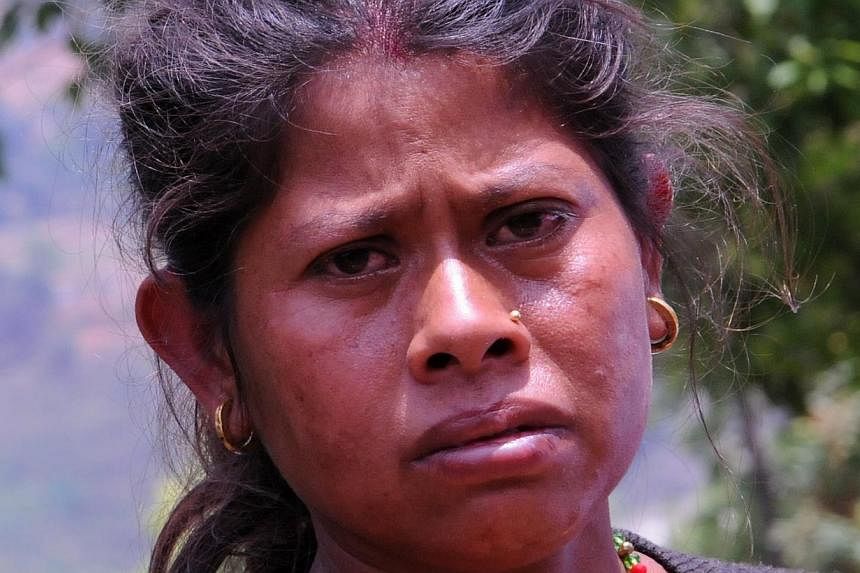THE impact of the earthquake in Nepal has been devastating - but it could have been much worse. Notwithstanding the scale of the destruction and misery that the quake wrought, in the greater scheme of big earthquakes and the vulnerability of the Himalayas, Nepal got off lightly.
Most predictions of the death toll in a massive, magnitude 8.5 earthquake in the Kathmandu Valley have been in the region of 100,000.
The April 25 earthquake was magnitude 7.8, and it struck in the day, on a Saturday when schools - 16,000 of which were destroyed - were closed and in the far-flung villages of the Himalayan country, many people were outdoors.
That is not to say the disaster is not an enormous one, especially for a country like Nepal, which not only lacks the capacity to deal with it, but whose geography and terrain are among the most challenging in the world.
Village after village in the countryside outside Kathmandu and in the rugged landscapes of Gorkha and Sindhupalchok, and in the Langtang area, was flattened and thousands died and many more have been maimed.
The death toll has surpassed 7,000 as of Sunday - eight days after the earthquake. It is likely that it will be in the region of 10,000, a figure given by the prime minister last week - or could even reach 15,000, a figure given by the army chief.
The stunned look and bloodshot eyes of 40-year-old Sanu Bahadur Dhanwad as she sat almost speechless, grasping the enormity of what had happened - with the surviving members of her family under a tarpaulin on the roadside amid the rubble of their home in Ratomatey, a hamlet by the road to Melamchi in Sindhupalchok district - told of the trauma that will affect many hundreds of thousands of Nepalese for years.
But while the trauma runs deep and will take a long time to heal, there is also a stoic fatalism in the mountains of the Himalayan country, where people are mostly subsistence farmers and are used to harsh conditions and a government that does not deliver much at the best of times.
Even the most well-prepared and resourced country would have had difficulty in mounting an adequate response to such a disaster, especially in the immediate aftermath. But Nepal - despite the well-known seismicity of the Himalayas, which has destroyed the city of Kathmandu once every 80 to 100 years - was less prepared than most.
The condition of the airport is also a constant anxiety, and aid experts are saying agencies should turn to the overland route from northern India as an alternative.
Nepal was embroiled in a civil war from 1996 to 2006. It has had six governments in the past seven years, says Mr Kunda Dixit, the prominent editor of Nepali Times.
In a May 2 editorial in the weekly journal, Mr Dixit wrote: "Poorly built houses, settlements on slopes vulnerable to landslides, botched rescue and relief, all cost lives. And the primary reason for such lethal negligence lies in politics - too much of it, or too little.
"When you have too much politics, it means elected officials spend so much time clawing at each other to get to power and plunder resources that they have no inclination to work to fulfill the long-term needs of their constituencies. And when there is too little politics in a democracy, it erodes the accountability of elected officials.
"Nepal currently suffers from both: too much politics at the national level, and too little politics at the grassroots where we haven't had local elections for 18 years."
There is a tremendous amount of goodwill for Nepal in the international community, and there is also a substantial Nepali diaspora - especially in India, the Middle East and South-east Asia - that is already responding. Aid is pouring in now, but it is still challenging to distribute and deliver it to those who need it most.
But aside from the immediate relief which will be necessary for months until communities begin to recover and rebuild, this is a chance to rebuild better and hone preparedness before the next really big earthquake comes.
And nobody can predict when that will be. It could come tomorrow or 50 or 80 years from now. But it surely will come. And it could be bigger, and come at a worse time - in the middle of the night for instance.
"So far, we have only been preparing to be prepared," said Mr Dixit in an interview in Kathmandu. The April 25 earthquake has shown just how urgent it is to actually be prepared, as opposed to planning for preparedness.
Nepal may not have the same luck again next time.


